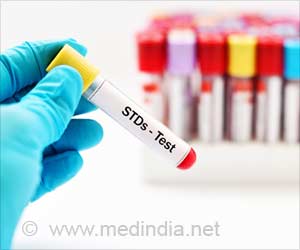According to a recent research pediatricians-in-training are not adequately educated about the methods to prevent recurrent sexually transmitted infections in teenagers.

Indeed, even after receiving antibiotics to clear their infections, 40 percent of teenage gonorrhea and chlamydia patients are diagnosed with a second bout of the same illness within a year. About half of all sexually transmitted infections in this country occur in teenagers.
Golden is the senior author of a study to be published Sept. 17 in Pediatrics that examines whether California pediatric residents - new physicians receiving specialty training in pediatric medicine - know about expedited partner therapy, which helps doctors stop sexually transmitted diseases from bouncing back and forth within a couple. About half of pediatric residents had never used the practice, in spite of the fact that most had diagnosed STDs among their patients, the study found. Knowledge of expedited partner therapy was better in physicians enrolled in the state's three residency programs that offer fellowships in adolescent medicine.
Expedited partner therapy laws, which were introduced in California in 2001 and have since been adopted in 30 other states, allow physicians to prescribe antibiotics to the sexual partners of gonorrhea or chlamydia patients without seeing the partner. Prior to 2001, laws authorized state health departments to contact sexual partners of people diagnosed with these infections and to test and treat the partners. However, most health departments lack the resources to offer this service widely. Expedited partner therapy has been shown to be an effective alternative, especially in cases where the patient says his or her partner is unlikely to visit a doctor.
The study focused on 289 pediatric resident physicians enrolled in 14 of California's 17 pediatric residency programs. The pediatricians-in-training answered a questionnaire about their use of expedited partner therapy, their familiarity with EPT laws and their comfort with using the approach. Although 83 percent of those surveyed had diagnosed an STD, only 52 percent had used EPT. A large percentage of the physicians questioned - nearly 70 percent - knew that California law allows EPT for chlamydia and gonorrhea treatment, but many inaccurately believed the policy also applied to other STDs. In addition, 87 percent of residents said that their lack of familiarity with EPT laws was a barrier to their use of the approach; only 24 percent said they had ever been taught about EPT; and residents who were further along in their training did not have better knowledge of EPT, suggesting a significant opportunity for increased instruction on the subject.
The results suggest that the lack of familiarity with EPT extends beyond residents to more experienced pediatricians, the research team said. "You learn from your mentors," said Anne Hsii, MD, the study's first author. "It may be that many of our pediatrician mentors don't know about these laws." Hsii was an adolescent medicine fellow at Stanford when the study was conducted and is now a pediatrician at two outpatient clinics associated with Chinese Hospital in San Francisco. The findings underscore the need for a more systematic approach to incorporating EPT information into pediatricians' training, Hsii said.
Golden noted that the best way for adolescents to deal with STDs is to avoid getting them in the first place. He encouraged parents of teenagers to talk to their kids about sexual health. "If parents can speak to their children about protecting against sexually transmitted infections, that's very useful," he said. "Obviously, using protection such as condoms is the best way to prevent these infections."
But regardless of whether parents weigh in, it's the responsibility of pediatricians to broach the subject with teens, and parents should ensure that their adolescent children have time to have confidential conversations with their pediatricians, without mom or dad present.
"The best person other than a parent for teens to talk to about these issues is the pediatrician," Golden said.
Paula Hillard, MD, a professor of obstetrics and gynecology at Stanford; and Sophia Yen, MD, a clinical assistant professor of pediatrics at Stanford and an adolescent medicine specialist at Packard Children's Hospital, also collaborated with Golden and Hsii on the research. The study received no external funding.
Source-Eurekalert















